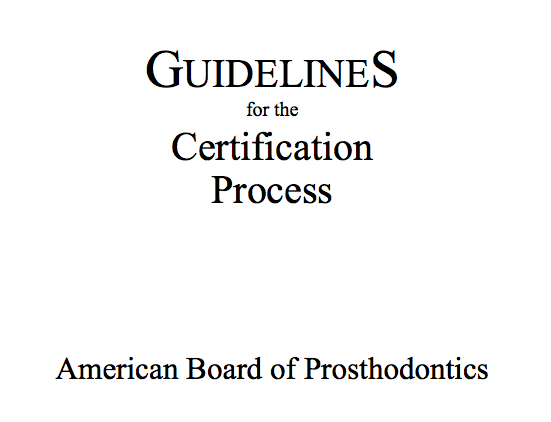只今、来月7日に行われる補綴専門医認定医試験(ボード試験)に向けての勉強に没頭している。アメリカ補綴学会の定める正規ブログラムを修了すると「補綴専門医」を標榜することができ、診療も可能となるが、その認定医となるためには、「認定医試験」というものを受けなければならない。
例えば、日本歯周病学会は、その序列として「認定医」をパスすると次が「専門医」、その次が「指導医」となっており、学会毎にその位置づけがことなっていて若干ややこしい。
この補綴専門医のためのボード試験は、コンピューターテストによるSection A、パート2からパート4はSection B、さらにシナリオ試験からなるSection Cがあり、Section AとSection B(パート2からパート4)から3つ、もしくはSection B(パート2からパート4)の中から2つと、Section C(シナリオ試験)、いずれにせよ計4つの試験をパスしなければならない。
Section Bはケースプレゼンテーション試験で、固定性補綴と部分床義歯の組み合わせ、パート3は固定性補(クラウン数11歯以上)、パート4は総義歯という構成になっている。
レジデンシープログラムはこのボード試験合格に向けて構成されているので、地道に勉強しケース作りに励めば合格する実力は自然と身に付くようになっている。したがってレジデントとして入学を許可される能力のある者なら、それほど恐れるほどの試験ではなく、「才能」というより、「努力」や「持続力」が要求される試験だと言ってよいと思う(ただし理解、暗記しなければならない量は膨大)。
アメリカ歯周病学会やアメリカ歯内療法学会の認定医試験のシステム、認定医の割合がどうなっているのか不明だが、補綴学会における「認定医」有資格者の割合は他の認定医に比較して圧倒的に低い、受験者数そのものも高くないと記憶している。「認定医」資格がなくても、補綴専門医の標榜や診療が可能なこともあるが、テストが計4回あること、ケースプレゼンテーションが必要なこと(しかも各ケースのステップ毎の技工物の提出が必須)など準備の煩雑さがそうさせているのかもしれない。ようは試験を4回パスして合格するまで、身も心も持たないということなんだと思う。私もなんだかんだ言っても最後はやるとは思うが、その気持ちは痛い程分かる。
さて、ボードプレゼンテーション試験の詳細は以前ブログに取り上げたので、こちらを参照して欲しい。
レクチャー;ABP Review Course Vol.3 Dr. Lernerによるプレゼンテーション
ボード試験はレジデンシーを2年修了した時点で受験することができ、3年目の最初のセメスターにSection A(通称 Written Board Exam)を受けることになっている。試験は4時間で計150問あり、内容はご覧のように多岐にわたっている。
大学によっては、このボード試験に向けたテスト対策等をプログラムディレクターが率先して行っているところもあるようだが、残年ながらNYUでは全くそういったフォローがない。過去の模擬試験を10年分渡されてあとは各自頑張って受かるように、「お前ら、受からなかったらタダじゃおかないからな!」、という指示(脅し?)があるだけである。
概要は以下の通り。
The content of the examination is based upon the Standards for Advanced Specialty Education Programs in Prosthodontics and is updated to reflect changes in those standards. There are “must” statements in the didactic curriculum section of the standards that require in-depth understanding and familiarity levels of knowledge in specific areas.
The distribution of knowledge levels within the standards is reflected in the number of questions from each area, weighted from in-depth to familiarity. The current standards emphasize the following didactic areas:
Instruction must be provided at the in-depth level in each of the following:
Fixed prosthodontics Implant prosthodontics Occlusion
Removable prosthodontics
Instruction must be provided at the understanding level in each of the following:
Biomaterials
Craniofacial anatomy and physiology
Diagnostic radiology
Geriatrics
Infection control
Implant placement including surgical and post-surgical management Maxillofacial prosthetics
Medical emergencies
Oral pathology
Preprosthetic surgery; including surgical principles and procedures Prosthodontic patient classification systems such as the Prosthodontic Diagnostic
Index (ACP Classification systems) for edentulous, partially edentulous and dentate patients.
Research methodology
Temporomandibular disorders and orofacial pain
Instruction must be provided at the familiarity level in each of the following:
Behavioral sciences
Biostatistics
Craniofacial growth and development Endodontics
Ethics
Immunology
Intraoral photography
Oral microbiology
Orthodontics
Periodontics
Practice management
Risk assessment for oral disease Sleep disorders
Scientific writing
Teaching methodology
Wound healing
In addition to these areas, questions from current prosthodontic literature and other related areas will complete the questions for the computer based examination. Candidates are given 4 hours to complete the examination.
Scoring the Computer Based Examination
The examination is constructed using standard psychometric methods. The test is designed by the Board and its measurement consultants to identify those candidates who are capable of meeting acceptable cognitive ability based on the Commission on Dental Accreditation’s Accreditation Standards for advanced Specialty Education Programs in Prosthodontics. The Board established the criterion referenced standard based upon acceptable cognitive ability. Board Members do not know candidates scores prior to final determination of the pass level.
というわけで、年末ぐらいから準備を始めて、過去10年分の過去問を一通りこなし、最後の追い込みを行っている最中である。同じ問題が出題されることはないので、各設問毎の答えを覚えても全く意味がないのは明白である。
各設問毎に参照すべき論文が示されているので、各自でそれを調べて基本を知り、さらに周辺知識を身につけることで各テーマの学び、知識を増やし深めていくことが必要で、その学習プロセスそのものがGPと補綴専門医を隔てるものであり、専門家としての理解の深さや見識の広さにつながっていくのは言うまでもない。
と他人事のように書いてしまったが、授業、診療、技工、文献抄読会のための課題論文の読み込み、プレゼンテーションの準備だけでほぼ一週間の予定が埋まっている。よって、診療やティーチングのちょっとした合間や、最近は食事の時間にスマホに保存しておいて過去問をチェックするなどして時間を作っている。
まるで駅の立ち食いそば屋でリュックを背負い、そばを食べながら日本史の一問一答を暗記していた浪人時代のようだ。当時との違いは体力と暗記力が比べ物にならないくらい衰えていることか。。
そんなことを言っても始まらないので、とにかく忘れては覚えの毎日で、挫けそうになることもあるが、勉強する内容そのものは非常に興味深く、必須の最新知識がこれでもかというくらい問われるので、楽しいしやりがいはある。衰えゆく暗記力や体力と、益々旺盛になっていく知的好奇心とのせめぎ合い、といったところだ。
何とかなっているのか、なっていないのか分からないが、先月受験した模擬試験の結果は得点率65%で全受験生の平均点と全く同じだった。テストまであと10日程、受かるかどうかを考える前に、とにかくやるしかない、結果は神のみぞ知る、という心境である。

